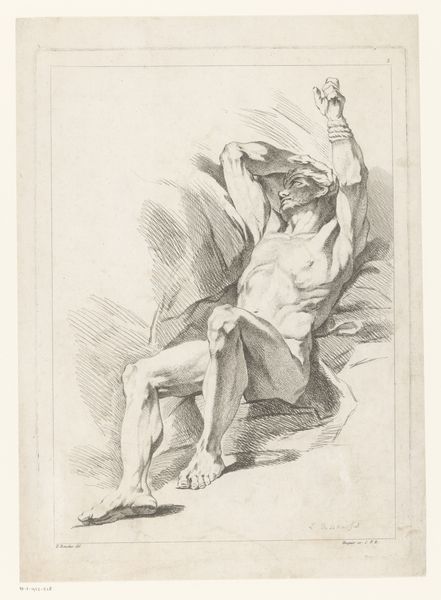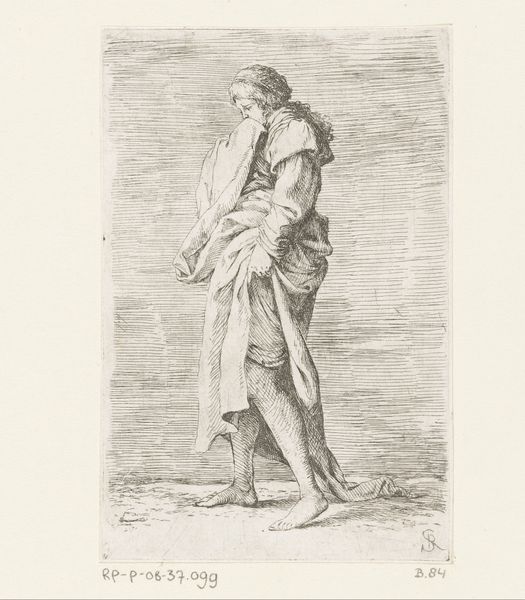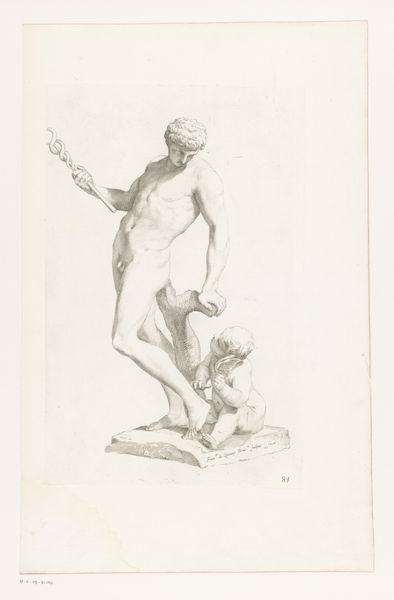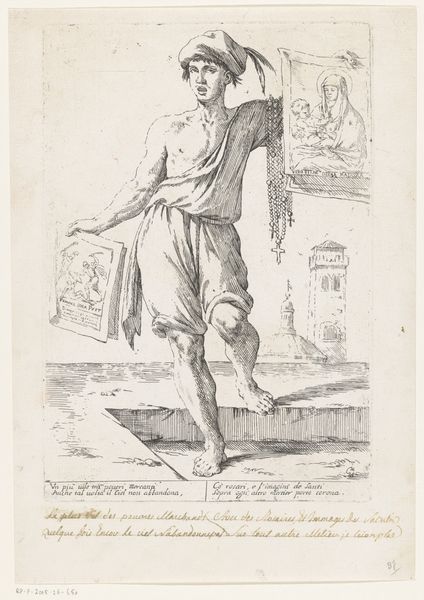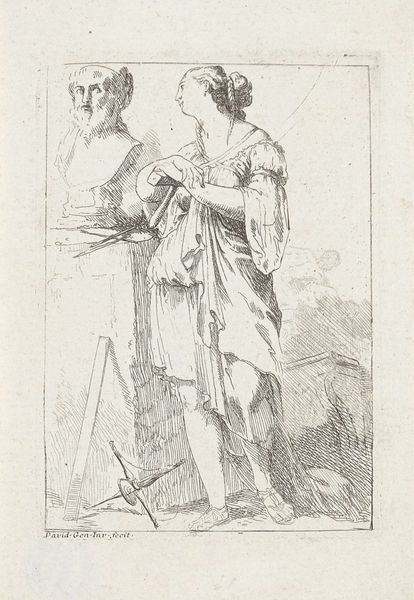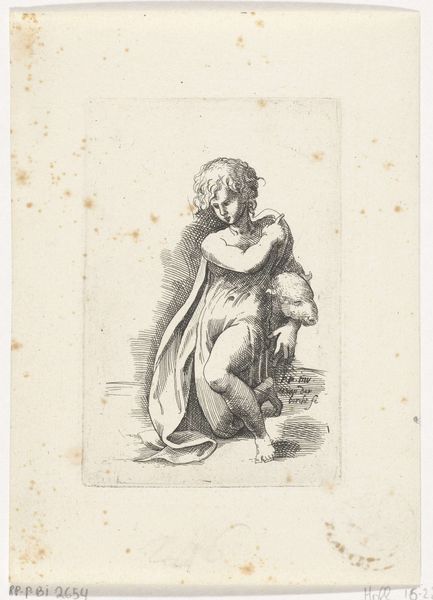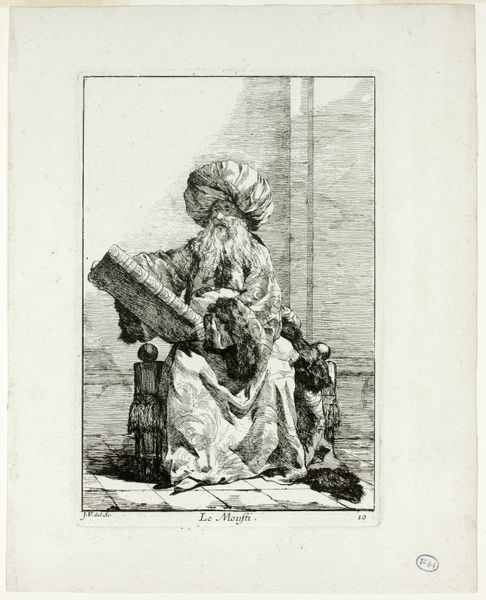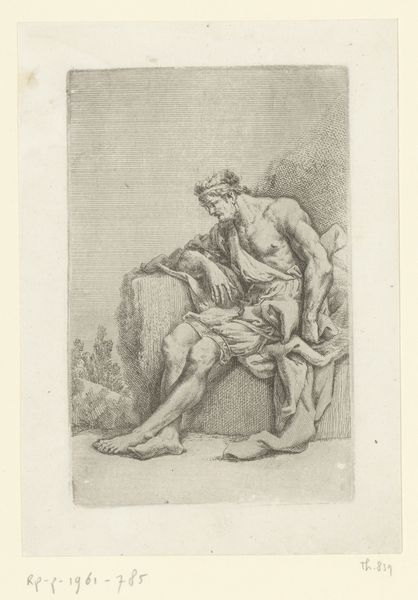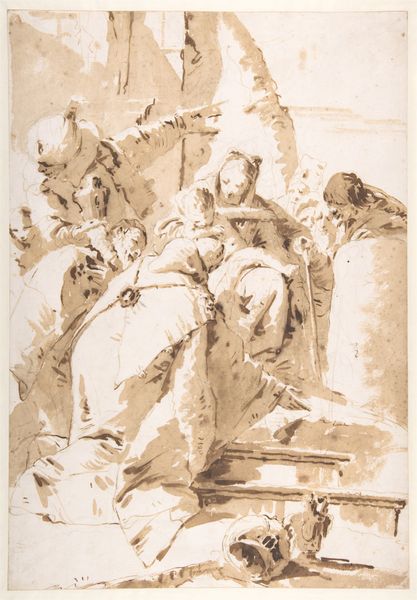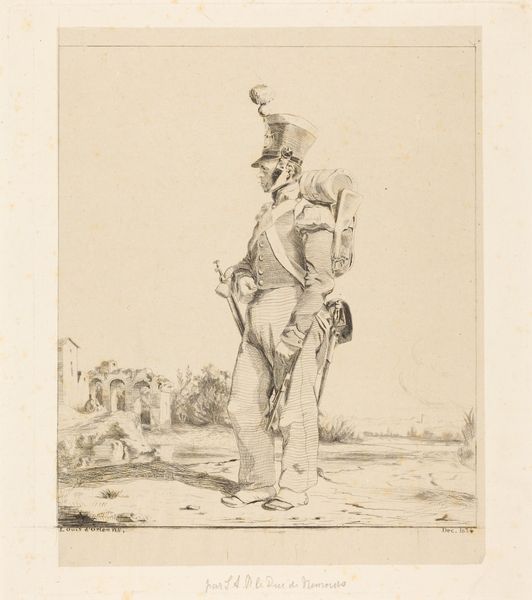
drawing, pencil
#
pencil drawn
#
drawing
#
pencil sketch
#
figuration
#
pencil drawing
#
romanticism
#
pencil
#
genre-painting
Dimensions: height 271 mm, width 204 mm
Copyright: Rijks Museum: Open Domain
Nicolas Toussaint Charlet made this drawing of a bricklayer by a wall, using graphite, most likely in the first half of the 19th century. At first glance it's a simple scene of labor. But we can also see it as part of a larger cultural narrative about the common man. In post-revolutionary France, there was growing interest in depicting everyday life and ordinary people. Artists began to explore the lives of workers, peasants, and other marginalized groups. Charlet’s choice of subject reflects this shift in cultural values and artistic priorities. The bricklayer is presented with dignity. We can also find underlying political tones if we look at the inscription that seems to be a declaration of equality: “Soyez plutôt maçons, ce n'est votre métier!” Roughly, it translates to: rather be a mason, it is your job. By studying archival material from the period, we can better understand the cultural and political context in which this work was created.
Comments
No comments
Be the first to comment and join the conversation on the ultimate creative platform.
